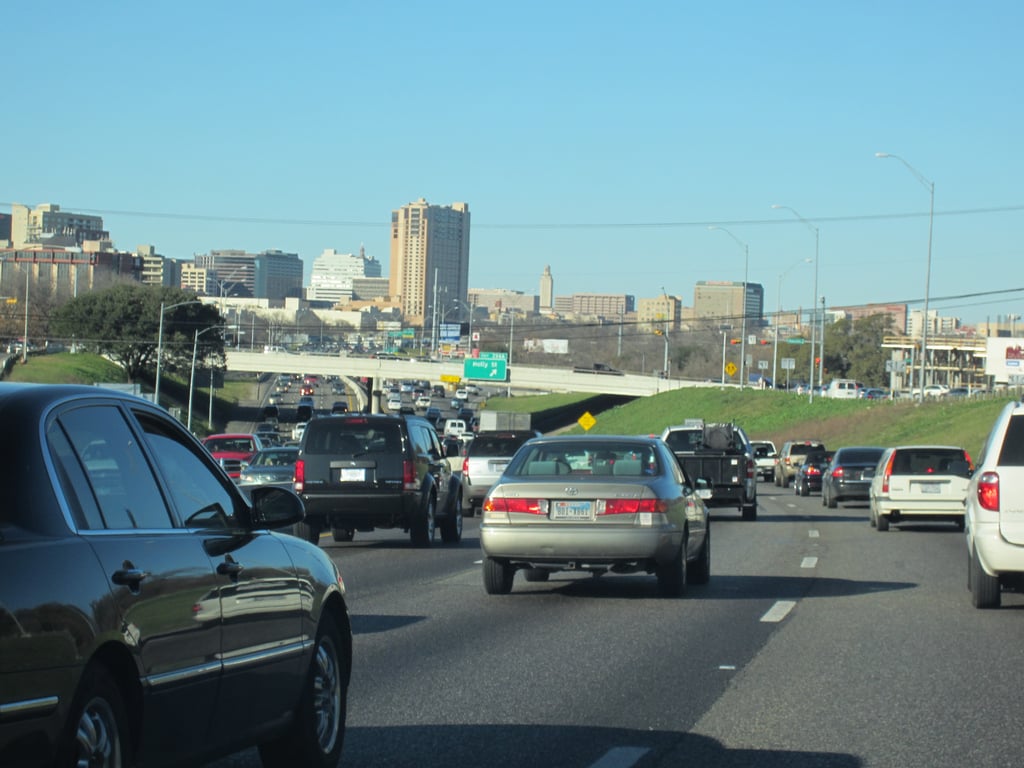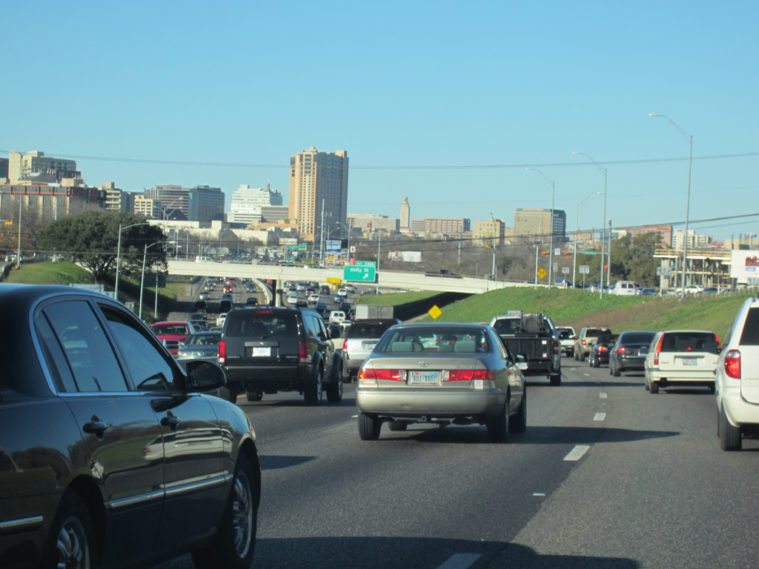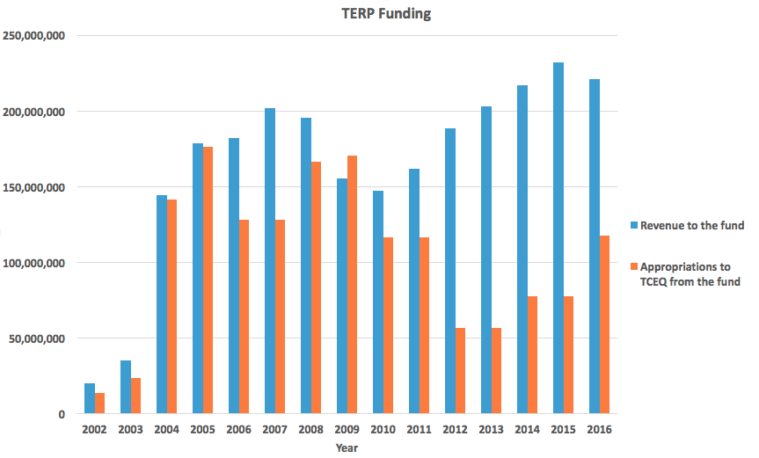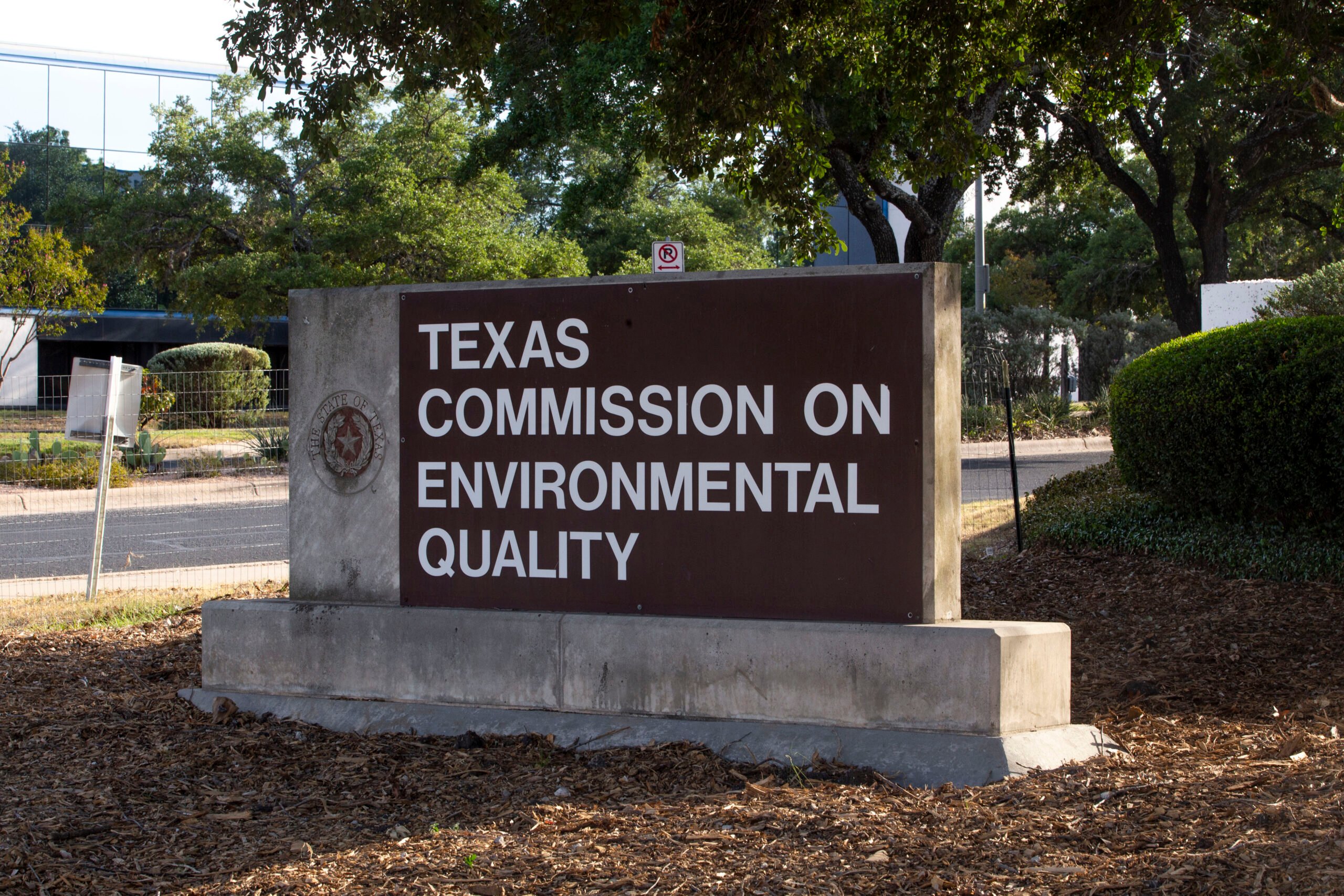
Texas Collects Fees from Residents to Clean Up the Air. Why Won’t Lawmakers Use It?
The Legislature uses an accounting trick to hoard money in the Texas Emissions Reduction Plan fund rather than appropriating it for clean air projects.


Editor’s note: This story has been updated.
In 2001, when the Legislature set up the Texas Emissions Reduction Plan (TERP), it made a promise to Texans: Pay an additional fee every time you take your car for an inspection or change the title and the state will use the money to improve air quality. Over the years, millions of Texans have paid into the fund — accumulating billions of dollars in state revenue — but smog levels in the Dallas-Fort Worth area, Houston and other parts of the state still exceed acceptable levels set by the EPA.
One of the key reasons why Texas hasn’t been more effective at reducing smog pollution is that the Legislature almost never appropriates the full fees collected every year. In 2015 and 2016, for instance, TERP received more than $450 million through fees each year, but the Lege only appropriated about $200 million to programs aimed at reducing smog. The remainder — $250 million — was used to balance the budget, as required by the Texas Constitution.
This accounting trick goes back to the early years of the program and has been used almost every session since. As a result, the fund now has a whopping $1.27 billion in unexpended revenues — a fat piggy bank that can only be used to improve air quality.
Texans are expected to pay $400 million into the fund over the next two years. Both the House and Senate budgets propose holding onto half or more of the fund — $260 million and $200 million, respectively.
“The real irony is that what we were told about where the money would go has not proven to be accurate,” said Stephen Minick, vice president of government affairs for the Texas Association of Business. “It’s not being diverted to other uses, but it’s simply sitting unused entirely.”

Business groups and environmentalists both agree that the money in the TERP fund should be used to reduce smog. For businesses, there is an economic incentive to dispensing TERP funds. Meeting federal smog standards means less regulatory burden on the industry. Most businesses, especially those in the transportation, chemical and construction industries, also contribute fees into the TERP fund every time they sell, lease or rent diesel trucks.
Money from the fund is administered by the Texas Commission on Environmental Quality (TCEQ), which offers rebates to fleet owners to retrofit their vehicles with cleaner-burning engines. The rebates have been used by school districts and trucking and commercial bus companies. Even Meals on Wheels has taken advantage of the program to buy a clean-fuel truck, saving the organization $40,000 over its lifetime, enough to prepare 16,000 hot meals for elderly Texans.
The need for additional TERP dollars persists. Andrea Morrow, a spokesperson for the TCEQ, told the Observer that overall there is more demand for TERP projects than funding allows. The latest application period for the TERP Diesel Emissions Reduction Incentive Program, for instance, received over $100 million in requests, even though only $60 million in funding exists. Other TERP programs, such as the Texas Clean Fleet Program and New Technology Implementation Grants Program, have also received more requests than available funding, she said.
If the Legislature appropriated all the revenue collected in the fund, that money could help cities such as Dallas, Fort Worth, Houston and Galveston that currently do not meet federal smog standards. Businesses in these areas currently face more stringent air quality permit requirements.
“It has a huge impact on business,” Minick said. “I can’t bring new manufacturing or industry to an area if there’s no way to find an offset [for the emissions].”
Those regulations are only going to become harder to comply with. Under the Obama administration, the EPA lowered ozone standards from 75 to 70 parts per billion, which will likely put Austin, San Antonio and El Paso on the list of Texas cities that don’t meet the federal standards for ozone levels. Even if businesses consider moving to places like Beaumont, Port Arthur or Brownsville that have low ozone levels, there may be more problems down the line, Minick said.
“That may be great for those places in the short term, but eventually those areas will be out of attainment because of the emissions,” Minick said. “That’s not in the long-term best interest to create more nonattainment areas.”
The long-term solution to reduce smog levels in Texas cities is to fund more clean energy projects through the TERP fund, Minick said. But even if the Legislature wanted to hand out all $1.2 billion currently sitting in the fund, lawmakers will run into constitutional issues.
“If you spend it, you’re hitting those provisions in the laws that say you can’t grow the budget by more than population and inflation,” said Cyrus Reed, conservation director for the Sierra Club’s Lone Star Chapter. “You push up against the different constitutional provisions that make it difficult to spend the money in Texas.”
The Legislature is currently considering a bill to extend the life of the TERP program until the state attains the national smog level standards set by the EPA. At a committee hearing last month, Senator Craig Estes, a Wichita Falls Republican who is sponsoring the bill, said he is “philosophically opposed” to collecting “over $1 billion from the citizens of the state of Texas and … not doing what we said we’re going to do with it.”
Still, Estes’ bill doesn’t address the $1.2 billion that has accrued in the fund and the likelihood of the Legislature tackling it in a tight budget cycle is slim, Minnick said.
“As vehemently as we disagree with this practice, we also pragmatically understand trying to move the needle when you have a deficit isn’t going to work,” said Minick. “There’s no way we can stand up publicly and say this problem is so critical that you need to appropriate it even if it means reducing education funding and child protective services funding.”


